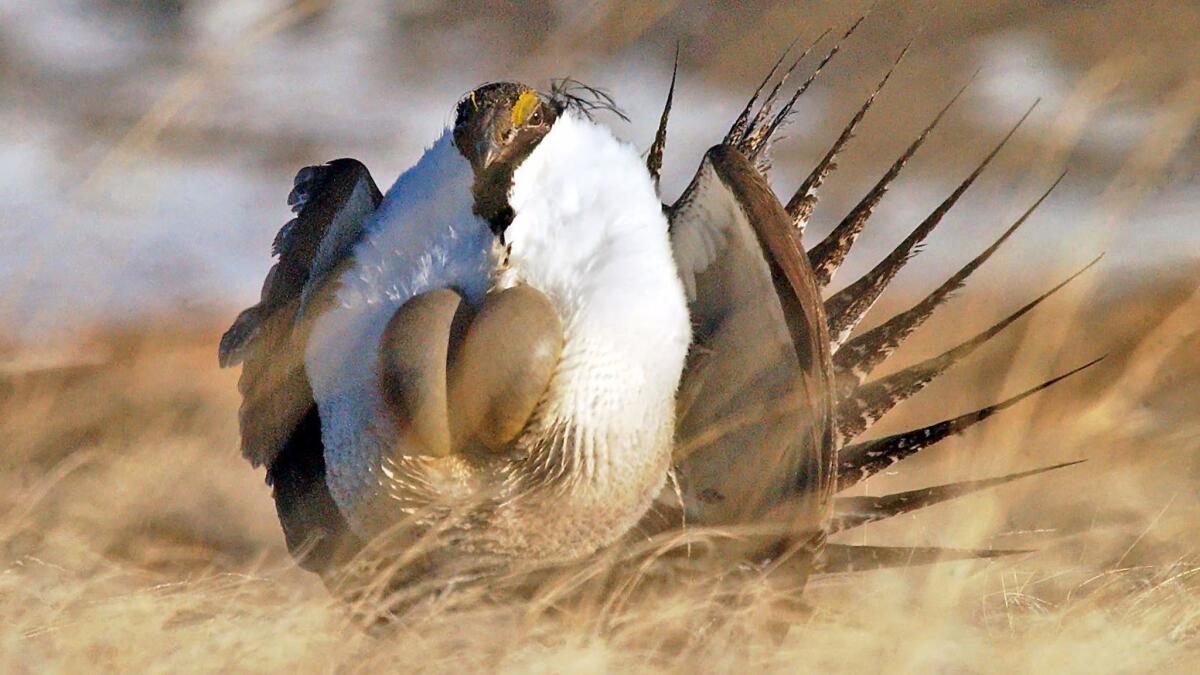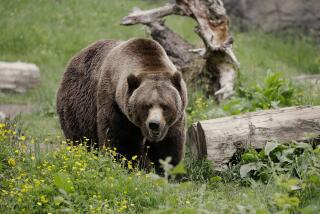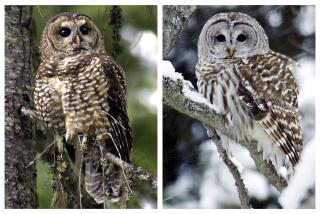Trump administration to reconsider protections for rare sage grouse

- Share via
The Obama administration’s plan to save the greater sage grouse was widely heralded as a landmark moment in collaborative conservation when, nearly two years ago, former Interior Secretary Sally Jewell announced the effort to protect the rare Western bird.
Republican and Democratic governors expressed support. So did many ranchers and environmental groups. While not everyone declared the plan perfect, it went a long way toward easing years of tension over a divisive issue that combined politics, energy development, land use, wildlife conservation and climate change.
The new effort also seemed to assure that another polarizing development would not happen: the potential listing of the bird for protection under the Endangered Species Act.
Now, however, the Trump administration says it will do with the sage grouse plan what it has done with so many other Obama environmental initiatives, including national monument designations, limits to offshore drilling and participation in the Paris climate accord: review and potentially reverse it.
On Wednesday, Jewell’s successor, Interior Secretary Ryan Zinke, said he was ordering his agency to review core principles of the 2015 agreement, perhaps most notably its underlying premise that protecting the sage grouse requires protecting its distinctive habitat, the sprawling “sagebrush sea,” which winds across the West from the Dakotas to California.
The Interior Department did not release a copy of the order or a written summary of it, but Zinke, speaking in a conference call with reporters, said the broad idea was to give the 11 states involved in sage grouse protection more flexibility to customize their efforts to protect the bird, freeing them from what he called the “heavy handedness” of the federal government.
After traveling the West in recent months, Zinke, a former congressman from Montana, said he decided to act because he had heard from people who “did not believe that they were heard on the issue of sage grouse.” He said a task force within the department would report back to him within 60 days.
“While we in the federal government have a responsibility under the Endangered Species Act to take action, we also want to be a good neighbor, a good partner and recognize that a lot of the state agencies and the work that has been done thus far are really the forefront of the effort,” he said.
The announcement could reopen a volatile issue.
Zinke, a Republican, made it even as some governors have urged him not to abandon the 2015 plan. In a letter last month, Wyoming Gov. Matt Mead, a Republican, and Colorado Gov. John Hickenlooper, a Democrat, told Zinke that moving from a preservation model based on protecting habitat to one that potentially depends instead on population goals for each state would be “not the right decision.”
On Wednesday, the announcement prompted a quick rejection from environmental groups.
“Basically, this is here we go again,” said Ken Rait, director of the public lands program for the Pew Charitable Trusts. “There’s an aspect of this that was just bringing peace to the region. That’s what happened in 2015. This is going to be like ripping a Band-Aid off a wound.”
Scientists say the sage grouse is an indicator species, that its health reflects the well-being of its habitat and hundreds of other species that depend on it, including elk, mule deer and golden eagles. Yet after decades of residential and industrial development and with new threats from climate change, the sagebrush sea has been in steady decline. Along the way, the sage grouse population has also declined, shrinking from millions of birds a few decades ago to perhaps as few as 200,000 now.
Zinke said Wednesday that his review, which will include employees of the U.S. Geological Survey, the Fish and Wildlife Service and the Bureau of Land Management, would consider allowing states to emphasize population goals over habitat protection. It would also study the impact of predators and disease and whether captive breeding could replace other conservation measures.
“Just because you have habitat doesn’t mean that the health of the flock is healthy or vice versa,” he said.
The 2015 plan did just what Jewell hoped it would: It convinced the Fish and Wildlife Service not to list the sage grouse as endangered in 2015. That decision is up for review in 2020.
More to Read
Sign up for Essential California
The most important California stories and recommendations in your inbox every morning.
You may occasionally receive promotional content from the Los Angeles Times.











